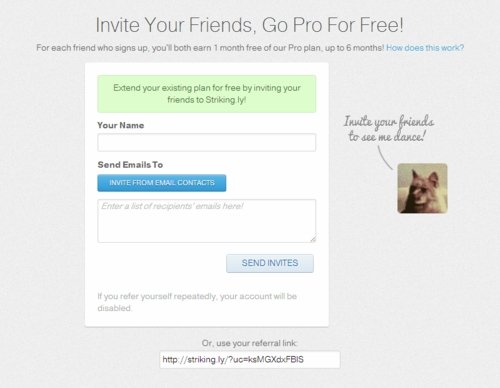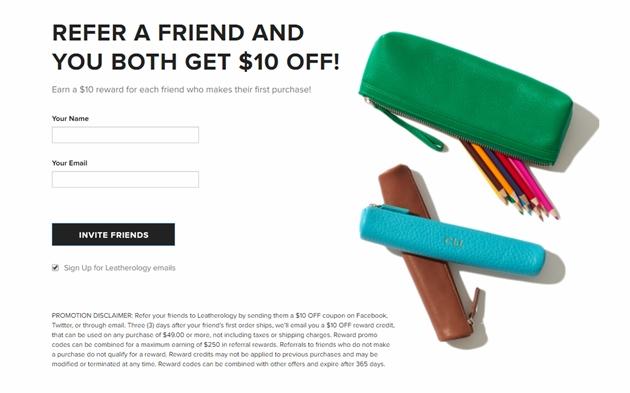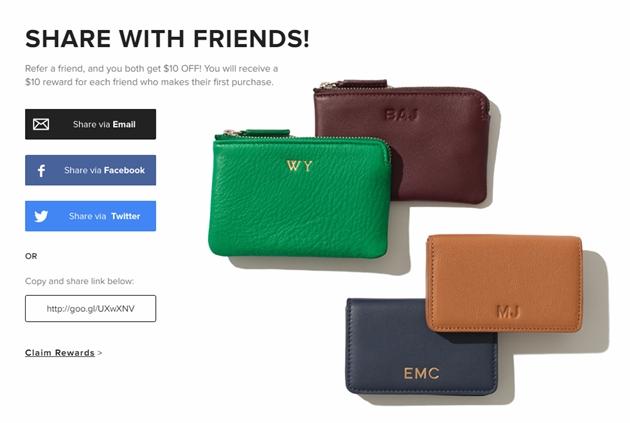Marketers have readily accepted the power of referral programs. Their reach, trust factor, and ability to target the right people combine to quickly and effectively boost customer acquisition.
The way they work is deceptively simple: You reward customers for being vocal advocates of your brand when they refer your brand to their friends and relatives.
Still, many refer-a-friend programs do not cover ground that's very much within their reach; easily avoidable mistakes hold them back. Let's look at a few of those common errors...
Mistake No. 1: Disparity Between Your Offerings and Your Customers' Needs
You must important understand which sorts of rewards appeal to which sorts of customers.
If your customers buy from you on a weekly or monthly basis, then it's logical that your refer-a-friend incentives include account credits and discounts off future purchases. But if they aren't regular customers, then those types of rewards would likely not appeal to them. Instead, a better approach might be to reward them with something of immediate value. You might think about providing access to not-yet-released products, or giving out gift cards.
So, the first step is to know your customers well so you can give them sufficient motive to refer your brand to their friends. Your referral incentives should also provide immediate, tangible value, else your program won't succeed.
Website builder platform Strikingly provides a good example of instant gratification and knowing your target audience.

Strikingly's referral program gave a free month of membership to users when they signed up a friend. It encouraged people to participate in the referral program by immediately offering a fun dancing-cat video when the user filled out the referral form. Surprisingly, that small gesture increased Strikingly's referral form conversion rate 200%.
Mistake No. 2: Beginning Small, With a Half-Hearted Pilot
Pilot programs targeted at a small percentage of your customers or website visitors usually don't yield great results. The simple reason, as in the case of converting window-shoppers into actual shoppers, is that a referral program is a number game. It requires a strong funnel: If you don't put enough names into the top of that funnel, nothing will come out the bottom.
Furthermore, unless you're already running a comprehensive loyalty program and have advanced social tracking or another advocate marketing technology, it's hard to know who your biggest advocates are. Even when you do have the technology, you'll undoubtedly come across shoppers who defy your assumptions. Some loyalty members won't go crazy for referrals, whereas some casual browsers will jump on the chance to get a referral incentive. Which is why you should make your refer-a-friend program accessible to anyone who visits your site.
You have to run a referral marketing program at scale. You have to approach everyone through all the available channels. Higher visibility for your referral program is directly proportional to greater conversion possibilities.
Mistake No. 3: Not Promoting Your Refer-a-Friend Program
Although a whole lot of word-of-mouth marketing is organic, you can't just "set it and forget it" in the case of a referral program. Make sure that it's highly visible on your homepage, and mention it in emails and social posts.
A client of ours recently started promoting its referral program on its homepage. Within one month, referral revenue increase more than 500%.
The homepage referral promotion doesn't need to take up a lot of space. See how Bebe does it; it's simple and elegant, and users who want to log in or search can't miss it:

Mistake No. 4: Making Refer-a-Friend Forms Too Complicated
We know that marketers need to strike a delicate balance between the amount of data collected via forms and the resulting conversion rate. Generally, the more fields a form has, the lower the conversion rate. In fact, data suggests that adding one extra step lowers your conversion rate by 3%. That sounds tiny, but it gets compounded each time a signup shares your page, creating a cumulative effect that can turn out to be substantial.
Keep it simple. Leatherology, a leather goods seller, has just two fields on its refer-a-friend main page:

After users supply a name and email address, they're delivered to a second page that immediately gives them a referral code; and if they prefer to use other means to share, they can do that, too:

Mistake No. 5: Instituting a Minimum Referral Threshold Above 1
Referral programs work best when they are allowed to grow organically. Requiring users to successfully refer, for example, five or ten friends before earning a reward will usually dissuade them from sharing.
There are two exceptions to this rule, however. If you have an exceptionally strong incentive, it may work; or, if your goal is list growth and your definition of referral conversion is sign-ups rather than purchases, a referral threshold won't be as intimidating because it won't require a purchase. In those cases, it makes a sense to be realistic and give users something that's within reach—usually 10 or fewer successful referrals.
More Resources on Refer-a-Friend Programs
Invite Your Friends! Three Best-Practices for a Successful Referral Program




